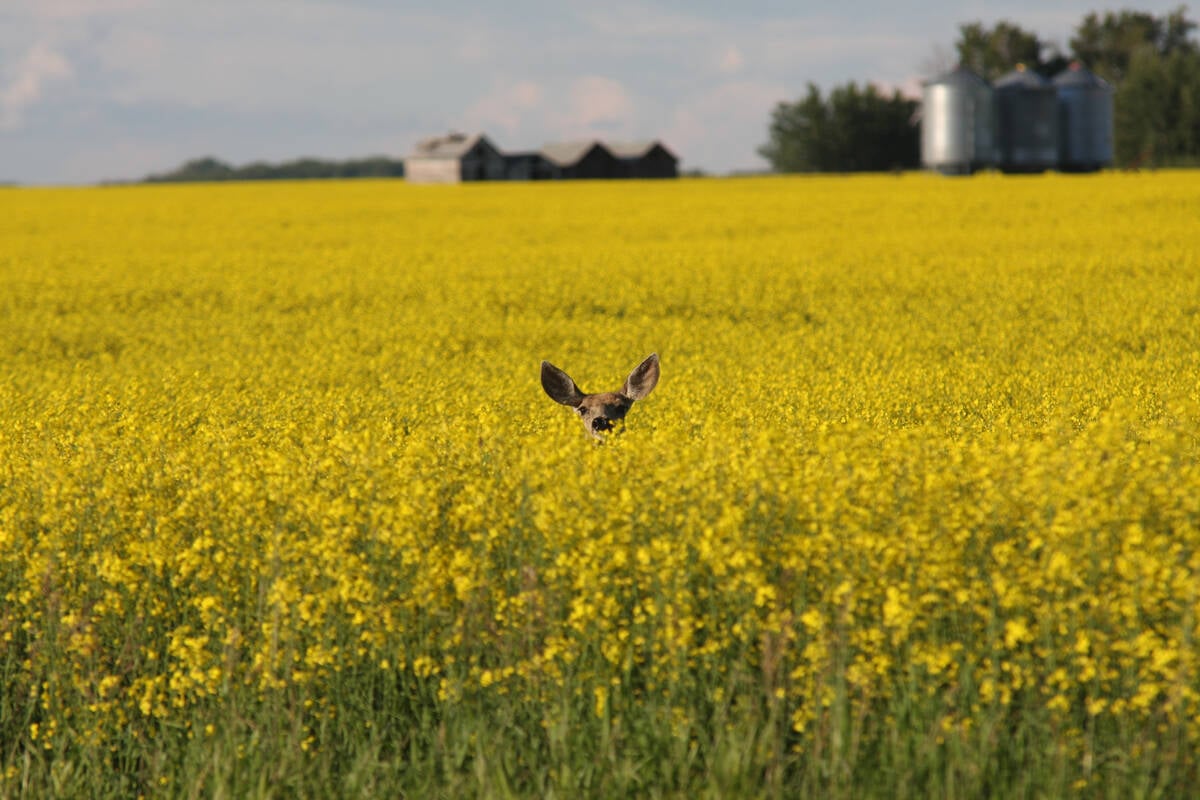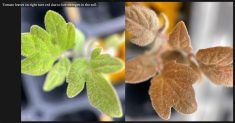Commercial cattle producers planning to calve in late spring or on early pasture need to be especially vigilant about their feed.
As moulds build in the feed this spring they can cause abortions weeks or months after they have been fed.
Researchers blame as much as 10 percent of all abortions in cattle on mycotoxins.
Jessica McNeil of Alberta Agriculture said mycotoxins that are produced as a byproduct of mould growth enter an animal’s blood stream after it has inhaled or eaten mouldy feed.
Read Also

Drones now used to assess wildlife crop damage in Saskatchewan
Wildlife damage in Saskatchewan crops is now assessed by drones and artificial intelligence.
The toxin, while not outwardly affecting the cow, will collect in the uterus and infect the placenta.
Mycotic abortions typically occur after the fourth month of pregnancy.
Vern Racz of the Prairie Feed Resource Centre at the University of Saskatchewan said that typically only “one or two percent abort. If a producer sees more than that he may want to consider his feed closely.”
McNeil advised looking for a leathery thickening between the placenta’s cotyledon. She said a “red or white ring worm-like” lesion is observed on the fetus in one quarter of mycotic abortions.
If the fetus remains in the uterus for any length of time after death, these rings will tend to disappear.
Alberta Agriculture recommends keeping aborted fetuses in a freezer.
“If only one or two abort then discard them after calving. If it is a problem, you’ll be able to search for the cause later on,” McNeil said.
Listeria can be a problem in ensiled feed. Large amounts in feed will transfer the bacteria to the fetus and kill the unborn calf. Humans can also be affected. Cows can be treated with antibiotics if
listeria is suspected.
Hay that is heated or harvested old or late can lead to a vitamin A deficiency, which can also cause abortions and reproductive problems in cows and bulls.
Abortions may have a characteristic retained placenta. Live calves affected by vitamin A deficiency may be blind or unable to stand.
Aflatoxins grow in stored feed and can cause abortions and reduce daily gain and vaccine effectiveness. Repeated feeding can permanently damage nervous and immune systems.
Fusarium-infected crops that are harvested as forage or grain while wet can cause estrogenism. This can result in abortion in females and feminine characteristics in males. Cows may show swollen nipples and vulvas and rectal and vaginal prolapse may occur.
Ergot is often found on cereal plants in wet years. If fed in sufficient amounts, the fungus will cause abortions.
Ochratoxins can infect prairie grain and will cause liver and kidney problems as well as abortion.
According to the Sask-atchewan agriculture department, mouldy sweet clover can create reproductive problems.
A chemical compound called coumarin, normally part of the plant, is converted to dicoumareol by moulds present during wet conditions or as a result of the heavy, succulent stem of the plant taking a long time to cure.
Dicoumareol is a blood anti-coagulant that causes both abortion and the death of calves shortly after they are born. It may cause bleeding of the reproductive organs and hemorrhaging in the calf.
Cattle may also have allergic reactions to mould spores. The dust can cause bovine interstitial pneumonia. Reduced oxygen in the cow’s blood stream can cause the fetus to abort.














